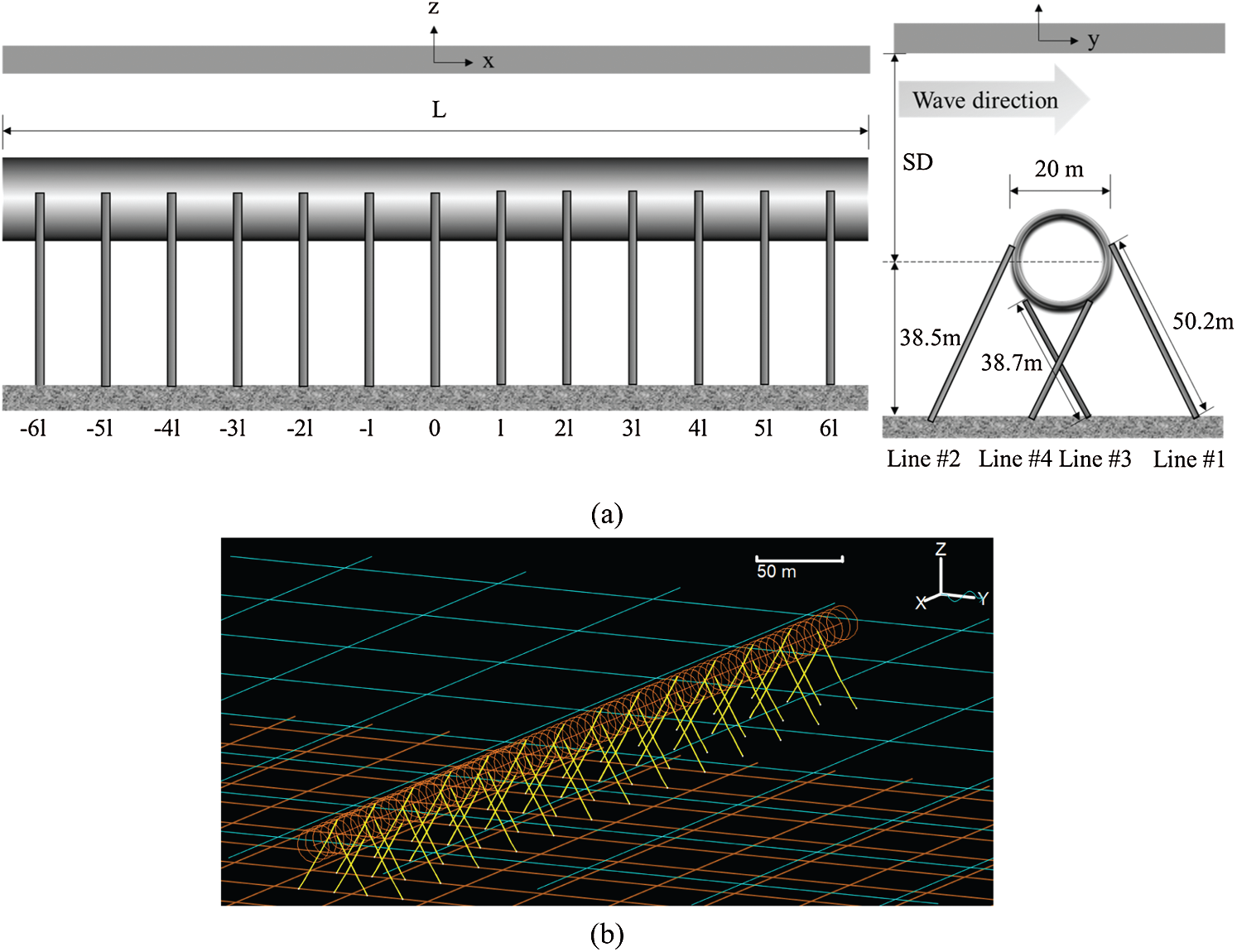


The bending properties of the line are represented by rotational spring-dampers at each end of the segment, between the segment and the node. A segment can be thought of as being made up of two co-axial telescoping rods that are connected by axial and torsional spring-dampers. SegmentsĮach model segment is a straight massless element that models just the axial and torsional properties of the line. buoyancy, added mass, drag) are calculated allowing for the varying wetted length up to the instantaneous water surface level. Where a segment pierces the sea surface, all the fluid related forces (e.g. The exception to this is end nodes, which have only one half-segment next to them, and so represent just one half-segment.Įach line segment is divided into two halves and the properties (mass, weight, buoyancy, drag etc.) of each half-segment are lumped and assigned to the node at that end of the segment.įorces and moments are applied at the nodes – with the exception that weight can be applied at an offset. A Matlab language program based on the analytical model is developed to obtain the solutions and is verified by the result of OrcaFlex, a typical transfer example is calculated and some useful conclusions are derived. NodesĮach node is effectively a short straight rod that represents the two half-segments either side of the node. Nodes and segments are numbered 1, 2, 3, … sequentially from end A of the line to end B.

OrcaFlex is based upon a main window that contains theMenus, a Tool Bar.
#WHICH THEORY THE ORCAFLEX IS BASED ON MANUAL#
The other properties (mass, weight, buoyancy etc.) are all lumped to the nodes, as indicated by the arrows in the figure above. w 1 UrcaFlex Manual Version 9.4a Orcina Ltd. The model segments only model the axial and torsional properties of the line. OrcaFlex is a powerful tool that encompasses a large variety of objects and features which enable assessing complex systems and applications through a mathematical model. OrcaFlex simulation models were built for two test cases provided by the.

Sensitivity analysis is strongly recommended. by Orcina, applied in dynamic analysis methods. A small change in structural damping can trigger a significant change in the nature of the VIV response. in this paper was more accurate than the OrcaFlex simulation calculation. This major new area of functionality was introduced to OrcaFlex version 11.0 in November 2019. a static analysis method for a flexible riser based on Cosserat theory. OrcaWave is a diffraction analysis program which calculates loading and response for wet bodies due to surface water waves via potential flow theory.
#WHICH THEORY THE ORCAFLEX IS BASED ON SERIES#
The line is divided into a series of line segments which are then modelled by straight massless model segments with a node at each end. OrcaFlex data and the critical damping at a particular response frequency is discussed in the OrcaFlex Help topic titled Line Theory: Structural Damping. A floating wind turbine system based on the OC3 Hywind system. OrcaFlex uses a finite element model for a line as shown in the figure below.


 0 kommentar(er)
0 kommentar(er)
